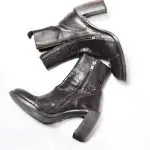You want fabrics that breathe, fabrics that wick away sweat, and fabrics that keep water out—but which one do you actually need? Understanding how breathable, moisture-wicking, and waterproof materials differ can make all the difference in comfort and performance. Each serves a unique purpose, and choosing the wrong one might leave you uncomfortable or unprotected. Let’s explore what sets these fabrics apart and when each is the right choice.
Table of Contents
Key Takeaways
- Breathable fabrics allow air circulation to regulate temperature and prevent overheating by promoting ventilation and moisture evaporation.
- Moisture-wicking fabrics pull sweat away from skin and spread it for quick drying, ideal for intense physical activities.
- Waterproof fabrics block liquid water using membranes with tiny pores but may reduce breathability, protecting against rain and harsh weather.
- Breathable fabrics suit low to moderate activity, moisture-wicking excels in heavy perspiration, and waterproof is essential for wet conditions.
- Combining breathable, moisture-wicking, and waterproof layers optimizes comfort, dryness, and protection in variable weather and activity levels.
Understanding Breathable Fabrics
Although breathable fabrics might seem similar to moisture-wicking materials, they serve a distinct purpose: letting air pass through to keep you cool and comfortable.
When you choose breathable materials, you’re selecting fabrics designed for maximum fabric breathability, allowing heat and air to flow freely. This airflow prevents overheating and reduces sweat buildup by promoting evaporation.
Unlike other fabrics, breathable materials don’t trap heat or moisture close to your skin. Instead, they create a ventilation effect that helps regulate your body temperature naturally.
Breathable fabrics ventilate your skin, preventing trapped heat and moisture for natural temperature control.
You’ll find breathable fabrics in everyday clothing, especially activewear, because they prioritize comfort through enhanced air circulation.
Understanding fabric breathability helps you pick the right clothing for warm or active conditions, ensuring you stay fresh and comfortable all day long.
How Moisture-Wicking Fabrics Work
You’ll notice moisture-wicking fabrics pull sweat away from your skin using capillary action, spreading it across the fabric’s surface.
These fabrics often use synthetic fibers designed to speed up drying and keep you comfortable.
Understanding how they enhance moisture evaporation helps you pick the right gear for any activity.
Capillary Action Mechanism
When moisture touches a moisture-wicking fabric, tiny channels within the fibers use capillary action to pull sweat away from your skin. This process relies on fluid dynamics, where liquid moves through narrow spaces without external forces, driven by surface tension.
The fabric’s microscopic grooves create a network that draws moisture outward, spreading it across a larger surface area. This helps the sweat evaporate faster, keeping you dry and comfortable. Unlike simple absorption, capillary action actively transports moisture, preventing it from pooling on your skin.
Understanding this mechanism shows why moisture-wicking fabrics outperform regular materials in managing sweat, enhancing your comfort during physical activities or hot weather by efficiently handling moisture through natural fluid movement.
Synthetic Fiber Advantages
Synthetic fibers excel at managing moisture because their structure enhances the capillary action that pulls sweat away from your skin.
When you wear moisture-wicking fabrics made from synthetics, you benefit from synthetic durability and synthetic breathability, keeping you comfortable during intense activities.
These fibers don’t absorb moisture; instead, they transport it to the fabric’s surface for quick evaporation. This keeps you dry and prevents chafing or irritation.
Here’s what you gain with synthetic fibers:
- Lightweight and breathable material
- Long-lasting synthetic durability
- Efficient moisture transport via capillary action
- Quick-drying performance
- Resistance to shrinking and stretching
Enhancing Moisture Evaporation
Moisture-wicking fabrics enhance evaporation by actively pulling sweat away from your skin and spreading it across a larger surface area. This process reduces moisture retention directly against your body, keeping you dry and comfortable.
By increasing the evaporation rate, these fabrics help sweat dry faster, preventing that sticky, damp feeling. The fibers often have hydrophobic properties, meaning they repel water and move it outward, where it can evaporate efficiently.
When you wear moisture-wicking clothing, you’ll notice less clamminess because the fabric continuously transports sweat away instead of absorbing it. This dynamic helps regulate your body temperature during intense activity or hot weather, making moisture-wicking fabrics a smart choice when you want to stay dry and cool.
Key Features of Waterproof Fabrics
When you choose waterproof fabrics, understanding how the waterproof membrane blocks water while allowing sweat to escape is key.
You’ll want to know how breathability works alongside waterproofing to keep you dry and comfortable.
Let’s explore these features so you can pick the right gear for any weather.
Waterproof Membrane Function
Although waterproof fabrics come in various forms, their core function depends on a specialized membrane that blocks water from passing through while allowing moisture vapor to escape. This balance is key to effective waterproof technology.
The membrane’s durability guarantees it withstands wear and harsh conditions without losing its protective qualities. When you choose waterproof gear, understanding how these membranes work helps you pick the right product.
- Tiny pores in the membrane block liquid water
- Pores allow sweat vapor to exit, preventing dampness
- Made from materials like PTFE or polyurethane
- Designed to maintain waterproofing over time
- Resistant to tears and abrasion for long-lasting use
This function is what makes waterproof fabrics reliable in wet environments.
Breathability With Waterproofing
Because staying dry inside your gear is just as important as keeping rain out, breathable waterproof fabrics strike an essential balance.
These fabrics use breathable membranes designed to block water from entering while allowing sweat vapor to escape. This feature helps prevent moisture retention inside your clothing, which can make you feel clammy and uncomfortable.
When you choose gear with breathable membranes, you reduce the buildup of internal dampness, keeping you dry from both external elements and your own perspiration. This balance is vital for activities where you exert yourself but need protection from rain or snow.
Comparing Performance: Breathable vs. Moisture-Wicking
Understanding the difference between breathable and moisture-wicking fabrics helps you choose the right gear for your activity.
Grasping breathable versus moisture-wicking fabrics aids in selecting perfect gear for any activity.
Breathable performance focuses on allowing air to flow through the fabric, keeping you cool and preventing overheating. Moisture-wicking efficiency, on the other hand, pulls sweat away from your skin to the fabric’s surface, where it evaporates quickly.
Here’s what you should consider:
- Breathable fabrics excel in ventilation and temperature regulation.
- Moisture-wicking fabrics prioritize sweat management.
- Breathability is ideal for low to moderate activity levels.
- Moisture-wicking suits intense exercise with heavy perspiration.
- Combining both offers balanced comfort and dryness.
Knowing these differences guarantees you pick gear that matches your needs and keeps you comfortable during workouts.
When to Choose Waterproof Materials
When you face wet or rainy conditions, waterproof materials become essential to keeping you dry and comfortable. Choosing waterproof gear offers clear advantages, especially if you’re hiking, commuting, or working outdoors.
Waterproof fabrics block water completely, preventing moisture from soaking through and chilling you. Unlike moisture-wicking or breathable materials, waterproof options provide a reliable barrier against heavy rain or snow.
However, they may reduce airflow, so you should consider the activity and weather intensity before choosing waterproof clothing. If staying dry outweighs breathability for your situation, waterproof is the way to go.
Keep in mind the waterproof advantages in protection and durability when selecting gear for wet environments. Ultimately, choosing waterproof means prioritizing dryness in challenging, wet conditions.
Combining Fabric Technologies for Optimal Comfort
Although no single fabric technology meets every need, combining breathable, moisture-wicking, and waterproof materials lets you tailor your gear for maximum comfort.
Using fabric layering effectively enhances temperature regulation and keeps you dry in variable conditions.
You’ll enjoy benefits like:
- Moisture-wicking base layers that pull sweat away from your skin
- Breathable mid-layers that allow airflow and prevent overheating
- Waterproof outer shells that block rain and wind
- Strategic layering that balances warmth and ventilation
- Versatility for changing weather throughout the day
Practical Applications and Benefits of Different Fabrics
Combining different fabric technologies sets the stage for exploring how each material performs in real-world situations. When you choose fabrics with the right balance of fabric durability and thermal regulation, you get gear that suits your activities perfectly. Breathable fabrics excel in warm weather, keeping you cool, while moisture-wicking materials pull sweat away, enhancing comfort. Waterproof fabrics protect you from rain and wind but might sacrifice breathability.
| Fabric Type | Practical Benefit |
|---|---|
| Breathable | Keeps you cool and dry |
| Moisture-Wicking | Enhances comfort during sweat |
| Waterproof | Shields you from harsh weather |
| Combination | Balances durability and comfort |
Understanding these helps you pick fabrics that match your needs and environment.
Frequently Asked Questions
How Do Fabric Care Instructions Differ for Breathable, Moisture-Wicking, and Waterproof Materials?
Just like sorting laundry by color, you’ll want specific fabric maintenance tips for each material. Follow washing instructions carefully: breathable fabrics need gentle cycles, moisture-wicking requires cold water, and waterproof demands special detergents to preserve coatings.
Can Moisture-Wicking Fabrics Lose Their Effectiveness Over Time?
Yes, moisture-wicking fabrics can lose their effectiveness over time due to moisture retention and wear. You’ll want to follow care instructions carefully to maintain fabric longevity and keep the wicking properties working well longer.
Are There Eco-Friendly Options Available for These Fabric Types?
You might wonder if eco-friendly materials really match performance. They do! Brands now use sustainable practices to craft breathable, moisture-wicking, and waterproof fabrics, so you can stay comfortable while supporting the planet.
How Do These Fabrics Perform in Extremely Cold Weather?
In extremely cold weather, you’ll want fabrics with excellent insulation to trap heat. Moisture-wicking helps keep sweat away, breathable fabrics prevent overheating, and waterproof layers protect against snow and wind, boosting your cold weather performance.
What Impact Do Fabric Blends Have on Breathability and Moisture Management?
You’ll find fabric composition directly affects performance characteristics like breathability and moisture management. Blends combine fibers to balance comfort and function, so choosing the right mix guarantees you stay dry and comfortable during activity.
- The Science of Nonwoven Fabric: How Fibers Become Fabric - July 11, 2025
- Nonwoven Fabric for Masks: What Makes a Good Filter? - July 11, 2025
- A Practical Guide to Using Nonwoven Geotextiles - July 11, 2025





